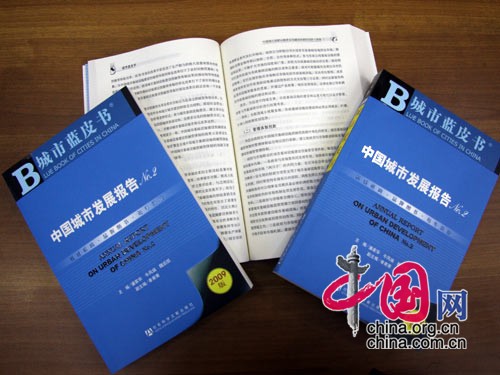On June 15, 2009, the Chinese Academy of Social Sciences (CASS) published the Blue Book of Cities in China. According to its findings, the current model of city development should be adapted to improve the distribution of wealth between urban and rural populations.
 |
|
Blue Book of Cities in China |
"Now, the distribution of wealth between urban and rural populations is a huge issue, with urban personal average income now being four to six times that of the rural population, while in 2000 the factor was only 2.79," said Wei Houkai, deputy director of the Research Center of City Development and Environmental Protection under CASS.
Wei gave the remarks at the Chinese City Development Summit in Beijing yesterday. Last year, there was an average of 59.3 computers per 100 households in cities, about 10 times the ratio in the countryside, he said.
Wei suggested that collective development for both urban and rural populations should be pursued. For example, basic infrastructure should be extended to countryside.
Wei also advocated that an integrated employment policy be implemented in city and countryside.
The Blue Book of Cities in China also says that reform of the household registration system is a top priority. In industrial centers the number of permanent residents is not increasing along with growth of the industry and the working population. In times of economic crisis, the workers - mainly migrant workers - risk losing their jobs and will leave the city to return home to the countryside. This seems to be a waste of human resource and can result in social instability.
The Blue Book of Cities in China suggests the government gradually adjust its national income distribution system and appropriately give subsidies for consumption expenditure during the financial crisis.
(China.org.cn by Li Xiaohua June 16, 2009)